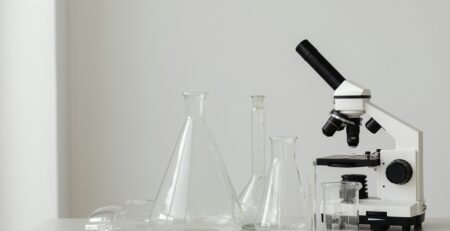29
Aug
The Sustainability Benefits of Choosing Borosilicate Beakers in Australian Labs
Laboratories are under growing pressure to reduce waste and operate more sustainably. One simple yet effective switch is choosing borosilicate beakers over disposable or short-life plastics. For Australian schools, universities, and research facilities, reusable glassware not only saves money but also supports institutional sustainability goals.
Why Borosilicate Beakers Are More Sustainable
BORO 3.3 borosilicate glass is designed to last for years. Unlike polypropylene or other plastics that degrade with repeated heat cycles, glass resists thermal shock and maintains clarity. A single borosilicate beaker can replace dozens of plastic alternatives over its lifetime, cutting procurement costs and reducing landfill waste.
Environmental and Safety Advantages
- Reusable and recyclable: At the end of its life, glass can be recycled, unlike many plastics contaminated by chemicals.
- Reduced microplastics risk: Glass does not leach micro-particles during heating or storage, improving lab and environmental safety.
- Lower long-term footprint: Fewer replacements mean fewer shipments, lowering packaging and transport emissions.
Real-World Lab Example
A Sydney university chemistry department tracked its glassware versus plastic consumption. Over three years, switching to BORO 3.3 beakers reduced plastic waste by nearly 600 kg. The change also lowered annual consumables budgets by 25%, while aligning with the university’s sustainability reporting targets.
Practical Lab Benefits Beyond Sustainability
Beyond environmental gains, borosilicate beakers also:
- Handle heating on hot plates and Bunsen burners without deformation.
- Provide chemical resistance against acids and bases (excluding hydrofluoric acid).
- Deliver consistent performance with clear etched graduations for everyday mixing and measuring.
FAQs
Can borosilicate beakers replace all plastic beakers?
Not always—polypropylene remains useful for strong alkali handling and fieldwork. But for heating and most lab mixing, borosilicate is superior.
How long does a borosilicate beaker last?
With proper care and cleaning, a BORO 3.3 beaker can last many years, far outliving most plastics.
What’s the main sustainability gain?
Fewer replacements, less waste, and recyclability—making borosilicate the eco-friendly option for Australian labs.
Comparison Table – Borosilicate vs Plastic Beakers (Sustainability Focus)
| Feature | Borosilicate (BORO 3.3) | Polypropylene (PP) |
|---|---|---|
| Reusability | Very high (years of use) | Moderate (limited cycles) |
| Recyclability | 100% recyclable | Often non-recyclable |
| Waste Generation | Low | High |
| Heat Resistance | Excellent (flame + autoclave) | Limited (softens > 135 °C) |
| Environmental Impact | Low (long-term use) | Higher (frequent disposal) |
References
- ISO 3585: Borosilicate Glass 3.3 – International Standards
- ASTM E438: Glassware Durability Specifications
- University of Sydney – Sustainability in Laboratory Practices
- CSIRO – Plastic Waste and Microplastic Impact Reports

